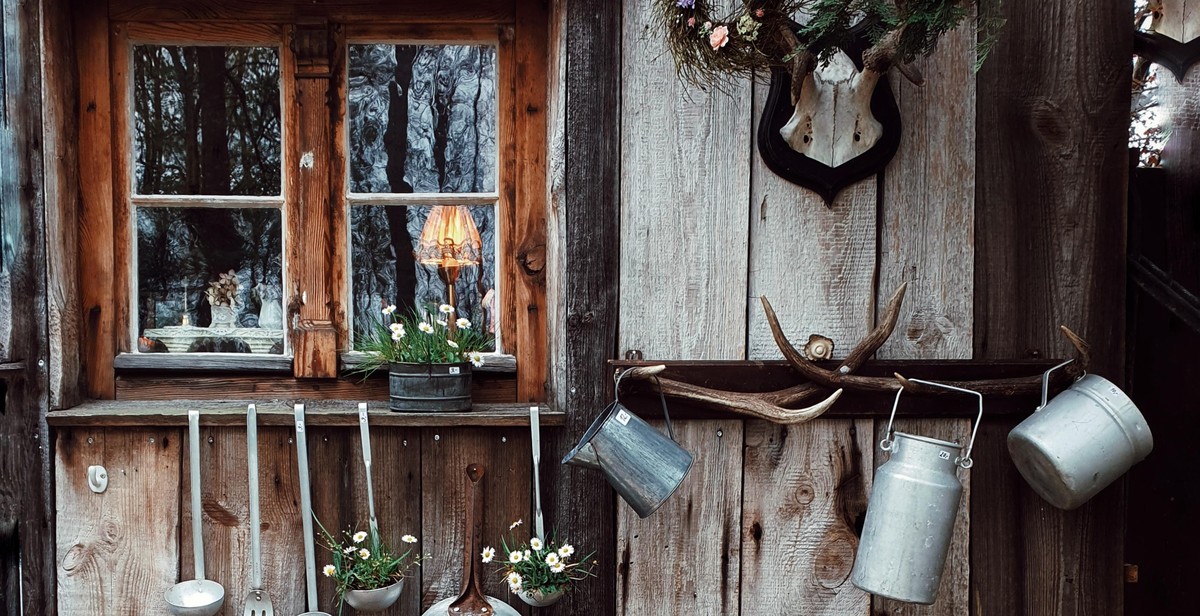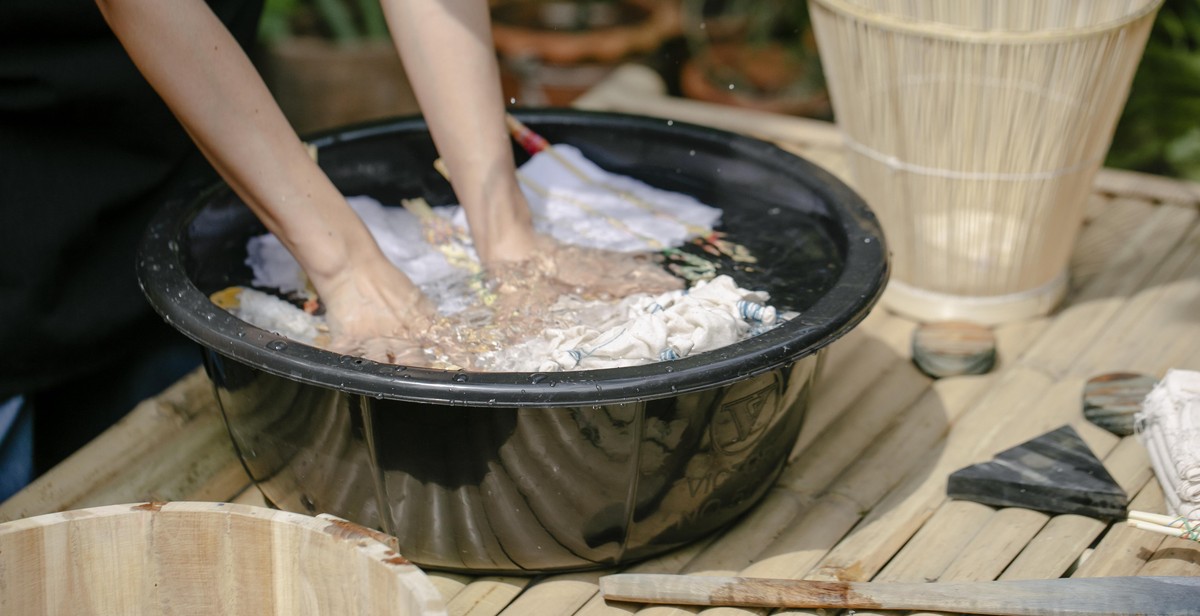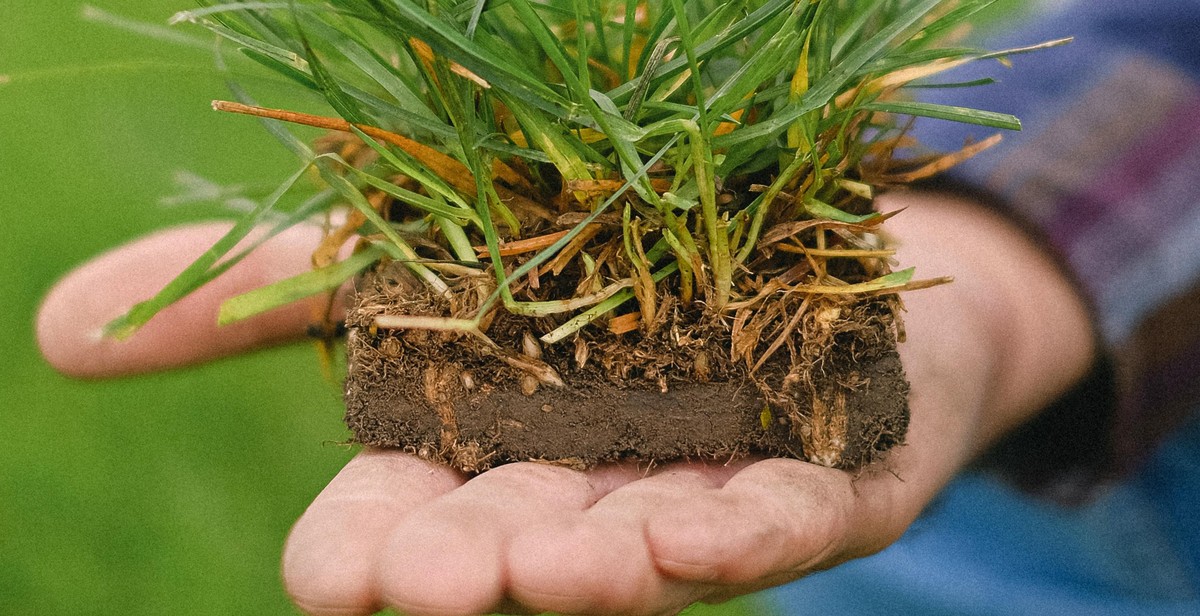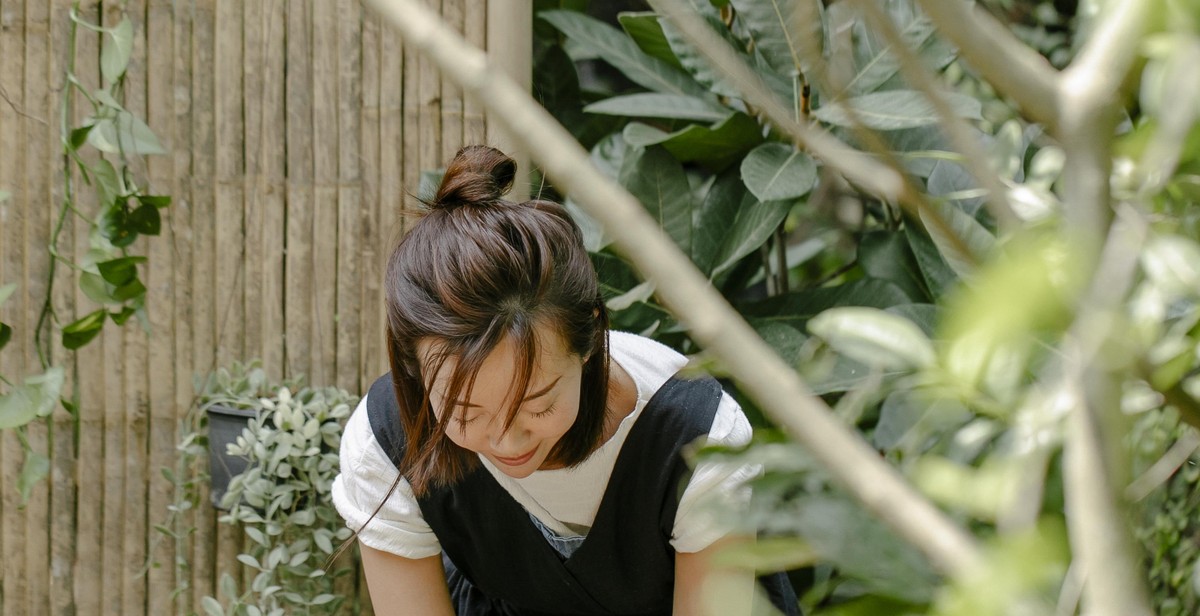Introduction: How to Build a DIY Vertical Garden using Bamboo Poles
Vertical gardening has gained a lot of popularity in recent years, and for good reason. It is an excellent way to grow plants in small spaces, and it adds a beautiful touch to any home or garden. A DIY vertical garden can be both fun and cost-effective, and it is a great way to showcase your creativity and gardening skills.
In this article, we will show you how to build a DIY vertical garden using bamboo poles. Bamboo is a fast-growing and sustainable material that is perfect for this project. It is also strong and durable, making it ideal for outdoor use.
Why Choose a Vertical Garden?
Vertical gardening is an excellent option for those with limited space, such as apartment balconies or small gardens. It is also a great way to add a touch of greenery to your home or office. Vertical gardens are not only aesthetically pleasing, but they also offer several benefits, including:
- Improved air quality
- Reduced stress levels
- Increased productivity
- Reduced energy consumption
Materials Needed
Before we begin, here are the materials you will need to build your DIY vertical garden:
- Bamboo poles
- Wire mesh
- Wire cutters
- Potting soil
- Plants
- Zip ties
- Drill
- Screws
Now that you have your materials ready, let’s get started on building your DIY vertical garden using bamboo poles!

Benefits of a Vertical Garden
A vertical garden is a unique and innovative way to grow plants in a limited space. It is a popular trend in urban gardening, where space is a constraint. Here are some benefits of having a vertical garden:
1. Maximizes Space Utilization
A vertical garden helps in making the most of the available space. It can be set up on a balcony, terrace, or even indoors. With a vertical garden, you can grow a variety of plants in a limited space, making it an ideal solution for urban dwellers.
2. Improves Air Quality
Plants are known to purify the air by removing harmful pollutants and toxins. A vertical garden can help in improving the air quality of your surroundings. It can also act as a natural air conditioner, reducing the temperature of your living space.
3. Enhances Aesthetics
A vertical garden can add a touch of greenery to your living space, making it more visually appealing. It can also act as a focal point, drawing attention to the beauty of the plants and their arrangement.
4. Provides Fresh Produce
A vertical garden can be used to grow herbs, vegetables, and fruits. This means that you can have fresh produce right at your doorstep, without having to go to the market. It also ensures that you have access to pesticide-free and organic produce, which is healthier for consumption.
5. Low Maintenance
A vertical garden requires low maintenance compared to traditional gardening. It is easy to water, prune, and fertilize the plants since they are easily accessible. Additionally, pests and diseases are less likely to affect plants in a vertical garden since they are not in direct contact with the soil.
6. Reduces Noise Pollution
A vertical garden can act as a sound barrier, reducing noise pollution. The plants absorb sound waves, making your living space quieter and more peaceful.
7. Increases Biodiversity
Vertical gardens can help in increasing biodiversity in urban areas. By providing a habitat for birds, bees, and other insects, they contribute to the local ecosystem. This, in turn, can help in reducing the impact of climate change and other environmental issues.
| Benefit | Description |
|---|---|
| Maximizes Space Utilization | A vertical garden helps in making the most of the available space. |
| Improves Air Quality | A vertical garden can help in improving the air quality of your surroundings. |
| Enhances Aesthetics | A vertical garden can add a touch of greenery to your living space, making it more visually appealing. |
| Provides Fresh Produce | A vertical garden can be used to grow herbs, vegetables, and fruits. |
| Low Maintenance | A vertical garden requires low maintenance compared to traditional gardening. |
| Reduces Noise Pollution | A vertical garden can act as a sound barrier, reducing noise pollution. |
| Increases Biodiversity | Vertical gardens can help in increasing biodiversity in urban areas. |

Tools and Materials for Building a DIY Vertical Garden using Bamboo Poles
Building a DIY vertical garden using bamboo poles is a great way to create a beautiful and functional garden space. To get started, you will need the following tools and materials:
Bamboo Poles
The first thing you will need is bamboo poles. These can be purchased at your local hardware store or online. Make sure to choose poles that are straight and sturdy, with a diameter of at least 2 inches. You will need enough poles to create the frame of your vertical garden.
Potting Soil
Potting soil is essential for creating a healthy growing environment for your plants. Choose a high-quality potting soil that is rich in nutrients and has good drainage. You will need enough soil to fill your planters.
Plants
Choose plants that are suitable for a vertical garden and can thrive in a small space. Some good options include succulents, herbs, and small flowering plants. Make sure to choose plants that have similar growing requirements and will do well in the same environment.
Drill
You will need a drill to create holes in the bamboo poles for attaching the planters. Make sure to use a drill bit that is the same size as the screws or nails you will be using.
Saw
A saw will be necessary for cutting the bamboo poles to the desired length. Make sure to use a saw that is appropriate for cutting bamboo, such as a hand saw or a reciprocating saw.
Measuring Tape
A measuring tape will be necessary for measuring and marking the bamboo poles before cutting and drilling. Make sure to use a measuring tape that is accurate and easy to read.
Nails or Screws
You will need nails or screws to attach the planters to the bamboo poles. Make sure to choose nails or screws that are appropriate for the size and weight of your planters.
Optional Tools and Materials
Depending on your design and preferences, you may also need additional tools and materials, such as wire or twine for attaching the bamboo poles to a wall or fence, or a level for ensuring that your vertical garden is straight.
| Tools | Materials |
|---|---|
| Bamboo Poles | Potting Soil |
| Drill | Plants |
| Saw | Nails or Screws |
| Measuring Tape | Wire or Twine (Optional) |
| Level (Optional) |
Having the right tools and materials is essential for building a successful DIY vertical garden using bamboo poles. With these tools and materials, you can create a beautiful and functional garden space that will provide you with fresh herbs, flowers, and vegetables for years to come.

Step 1: Measure and Cut the Bamboo Poles
Bamboo is a versatile and eco-friendly material that can be used for a variety of DIY projects, including vertical gardens. In this step-by-step guide, we will show you how to build a DIY vertical garden using bamboo poles.
Materials Needed:
- Bamboo poles
- Tape measure
- Saw or pruning shears
Instructions:
Before you start building your vertical garden, you need to measure and cut the bamboo poles to the desired length. Here’s how:
- Measure the height of the area where you want to install the vertical garden. This will determine the length of the bamboo poles you need.
- Mark the length of the bamboo poles on each pole using a tape measure and a pencil.
- Cut the bamboo poles to the desired length using a saw or pruning shears. Make sure to cut the bamboo poles as straight as possible to ensure a secure fit when assembling the vertical garden.
It’s important to note that bamboo poles come in different diameters, so make sure to choose the right size for your vertical garden. Thicker bamboo poles are more sturdy and can support heavier plants, while thinner poles are more flexible and can be used for smaller plants.
| Diameter | Recommended Use |
|---|---|
| 1/2 inch | Small plants |
| 3/4 inch | Medium plants |
| 1 inch | Large plants |
Once you have measured and cut your bamboo poles, you are ready to move on to the next step of building your DIY vertical garden.

Step 2: Drill Holes in the Bamboo Poles
Drilling holes in the bamboo poles is necessary to allow water to flow through the poles and reach the plants in the garden. Here are the steps to follow:
Materials Needed:
- Bamboo poles
- Drill
- Drill bit (size may vary depending on the size of the bamboo poles)
- Measuring tape
- Marker
Instructions:
- Measure the distance between the bottom of the first bamboo pole and the top of the second bamboo pole. This will determine the distance between the holes.
- Mark the spots where you will drill the holes on the bamboo poles using the measuring tape and marker. The marks should be evenly spaced and aligned on each pole.
- Insert the drill bit into the drill and tighten it securely.
- Place the bamboo pole on a stable surface and hold it firmly with one hand.
- With the other hand, start drilling a hole at the marked spot on the bamboo pole. Make sure to drill straight and perpendicular to the pole.
- Drill until the bit goes through the pole and comes out on the other side. Be careful not to drill too deep or too close to the edge of the pole, as this may cause it to split.
- Repeat steps 4 to 6 for each marked spot on all the bamboo poles.
After drilling the holes, you can sand the edges of the holes to remove any rough or sharp edges that may damage the plants. The bamboo poles are now ready to be assembled into the vertical garden frame.
| Tips |
|---|
| Use a sharp drill bit to make clean and precise holes. |
| Hold the bamboo pole securely and drill straight to prevent the pole from splitting. |
| Drill slowly and steadily to avoid overheating the drill bit and burning the bamboo. |
| Wear protective gear such as safety glasses and gloves to prevent injury. |

Step 3: Assemble the Bamboo Poles
Once you have all your materials ready, it’s time to assemble the bamboo poles. Follow these steps carefully:
1. Cut the Bamboo Poles to Size
Using a saw, cut the bamboo poles to the desired length. Make sure to measure and mark the poles beforehand to ensure they are all the same length. You will need four poles for each panel of your vertical garden.
2. Sand the Bamboo Poles
After cutting the poles, sand them down to remove any rough edges or splinters. This will ensure that the poles are smooth and will not damage the plants or the wall they will be attached to.
3. Drill Holes in the Bamboo Poles
Using a drill, make two holes in each bamboo pole, one at the top and one at the bottom. The holes should be about 1 inch from the end of the pole and should be big enough to fit the wire through.
4. Connect the Bamboo Poles with Wire
Take two bamboo poles and connect them by threading a wire through the holes at the top and bottom of each pole. Twist the wire tightly to secure the poles together. Repeat this process with the other two poles to create a panel.
5. Repeat the Process to Create More Panels
Repeat steps 3 and 4 to create as many panels as you need for your vertical garden. Make sure to leave a small gap between each panel to allow for proper drainage and air circulation.
6. Attach the Panels to the Wall
Using screws and wall anchors, attach each panel to the wall. Make sure to level each panel before screwing it in place to ensure that your vertical garden is straight and even.
7. Add the Plants
Once your panels are securely attached to the wall, it’s time to add the plants. Gently insert your plants into the pockets of the felt cloth, making sure to space them out evenly. Water the plants thoroughly and watch them grow!
8. Maintain Your Vertical Garden
Regularly water your plants and prune them as needed to keep your vertical garden healthy and thriving. You may also need to replace the felt cloth every few years to ensure that it stays in good condition.
By following these simple steps, you can create a beautiful and functional vertical garden using bamboo poles. With a little bit of effort and care, you can enjoy fresh herbs, vegetables, and flowers right in your own backyard.

Step 4: Fill the Pots with Soil and Plants
Now that you have your bamboo pole structure ready, it’s time to fill the pots with soil and plants. This is the most exciting part of the project as you get to see your vertical garden come to life. Here’s what you need to do:
1. Choose the Right Soil
The soil you choose will determine the success of your plants. It’s important to choose a high-quality potting mix that’s rich in nutrients and has good drainage. Avoid using garden soil as it can be too heavy and may contain weed seeds, pests, and diseases.
Look for a potting mix that’s specifically formulated for container gardening. It should be light, fluffy, and well-draining. You can also add perlite or vermiculite to improve drainage.
2. Select Your Plants
When choosing plants for your vertical garden, consider the amount of sunlight your garden receives. Make sure you choose plants that are suitable for the light conditions in your garden.
You can also choose plants based on their growth habits. For example, trailing plants like ivy and petunias are perfect for hanging baskets, while upright plants like herbs and succulents are great for vertical gardens.
3. Fill the Pots with Soil
Fill each pot with soil, leaving about an inch of space at the top. Gently tamp down the soil to remove any air pockets.
4. Plant Your Plants
Remove your plants from their containers and loosen the roots. Place the plants in the soil and gently pat the soil around the roots to secure them in place.
Make sure you space your plants evenly and leave enough room for them to grow. You don’t want your plants to be too crowded as this can lead to poor growth and disease.
5. Water Your Plants
Water your plants thoroughly after planting. Make sure the soil is evenly moist but not waterlogged. You can use a watering can or a hose with a gentle spray nozzle to water your plants.
Keep your plants well-watered throughout the growing season. Check the soil regularly and water when it feels dry to the touch.
6. Maintain Your Vertical Garden
Your vertical garden will require regular maintenance to keep it looking its best. Here are some tips:
- Trim your plants regularly to promote bushy growth
- Fertilize your plants every few weeks with a balanced fertilizer
- Check for pests and diseases and treat them promptly
- Replace any plants that are not doing well
7. Enjoy Your Vertical Garden
Now that your vertical garden is complete, it’s time to sit back and enjoy the fruits of your labor. Your garden will provide a beautiful and functional addition to your home, and you’ll love the fresh herbs, flowers, and vegetables that you can harvest.
With a little care and attention, your vertical garden will thrive and provide you with years of enjoyment.

Step 5: Mount the Vertical Garden
Now that you have created your bamboo pole structure and planted your plants, it’s time to mount your vertical garden onto a wall or fence. Here are the steps:
Materials Needed:
- Electric drill
- Drill bits
- Masonry screws
- Level
- Pencil
Instructions:
- Decide where you want to mount your vertical garden. Make sure the wall or fence is sturdy enough to hold the weight of the garden.
- Hold the bamboo pole structure against the wall or fence in the desired location. Use a level to make sure it is straight.
- Use a pencil to mark the locations where you will drill holes into the wall or fence to attach the structure.
- Using an electric drill and the appropriate drill bit for your wall type (wood, masonry, etc.), drill holes into the wall or fence where you made your marks.
- Insert masonry screws into the holes and tighten them until they are flush with the wall or fence.
- Hang the bamboo pole structure onto the screws using the holes that were drilled into the structure during Step 4.
Tips:
- Make sure to use the appropriate drill bit for your wall type to avoid damaging the wall or fence.
- Use a level to ensure that your vertical garden is straight and level when mounted.
- If you are mounting your vertical garden onto a brick wall, use a masonry bit to drill holes into the brick.
Conclusion
By following these steps, you can easily mount your DIY vertical garden onto a wall or fence and enjoy the benefits of a beautiful and functional garden. Remember to water your plants regularly and enjoy the beauty of your creation.

Maintenance Tips
Building a DIY vertical garden using bamboo poles is a great way to bring nature into your home or garden. However, maintaining your vertical garden is crucial to ensure its longevity and keep it looking healthy and beautiful. Here are some maintenance tips to keep in mind:
Watering
Watering is one of the most important aspects of maintaining your vertical garden. Depending on the type of plants you’ve chosen, you may need to water them daily or every other day. Keep in mind that the soil in your vertical garden may dry out faster than traditional ground gardens, so monitor the moisture level closely.
To make watering easier, you can install a drip irrigation system or use a watering can with a long spout. Be sure to water the plants thoroughly, so the water reaches the roots. Avoid overwatering, as this can cause root rot and other problems.
Fertilizing
Fertilizing your vertical garden is essential to keep your plants healthy and thriving. You can use organic or synthetic fertilizers, depending on your preference. Be sure to follow the instructions on the fertilizer packaging for the best results.
When fertilizing, be careful not to overdo it, as this can damage your plants. You can also use compost as a natural fertilizer, which will provide your plants with essential nutrients.
Pruning
Regular pruning is necessary to keep your vertical garden looking neat and healthy. Trim off any dead or yellowing leaves and cut back any overgrown stems or branches. This will encourage new growth and promote healthy plant development.
Be sure to use clean, sharp pruning shears to avoid damaging your plants. You can also prune your plants to shape them and create a more visually appealing garden.
Pest Control
Pests can be a problem in any garden, and your vertical garden is no exception. Keep an eye out for common garden pests like aphids, mites, and mealybugs. You can use insecticidal soap or neem oil to control these pests.
Another way to prevent pests is to keep your garden clean and tidy. Remove any dead leaves or plant debris, as these can attract pests and diseases.
| Task | Frequency |
|---|---|
| Watering | Daily or every other day |
| Fertilizing | Every 4-6 weeks |
| Pruning | As needed |
| Pest control | As needed |
By following these maintenance tips, you can ensure your DIY vertical garden using bamboo poles stays healthy and beautiful for years to come.

Conclusion
Building a DIY vertical garden using bamboo poles is an excellent way to enhance the beauty of your outdoor space while also providing a home for your favorite plants. This project is easy to execute and cost-effective, making it an ideal option for gardeners on a budget.
By following the steps outlined in this article, you can create a stunning vertical garden that will provide you with fresh herbs, vegetables, and flowers all year round. Remember to select plants that are suitable for your climate and light conditions, and to water them regularly to ensure they thrive.
One of the benefits of using bamboo poles is that they are eco-friendly and sustainable. Bamboo is a fast-growing and renewable resource that is also durable and long-lasting. By using bamboo in your vertical garden, you are reducing your carbon footprint and contributing to a more sustainable future.
Overall, building a DIY vertical garden using bamboo poles is a fun and rewarding project that can provide you with countless hours of enjoyment. Whether you are an experienced gardener or a beginner, this project is sure to enhance the beauty of your home and garden.
| Pros | Cons |
|---|---|
| Cost-effective | Requires some DIY skills |
| Enhances the beauty of your outdoor space | Requires regular maintenance |
| Provides fresh herbs, vegetables, and flowers all year round | Plants may need to be replaced periodically |
| Eco-friendly and sustainable | Requires some planning and research |
Overall, the benefits of building a DIY vertical garden using bamboo poles far outweigh the cons. With a little bit of effort and creativity, you can create a beautiful and sustainable garden that will provide you with fresh produce and a sense of pride for years to come.
